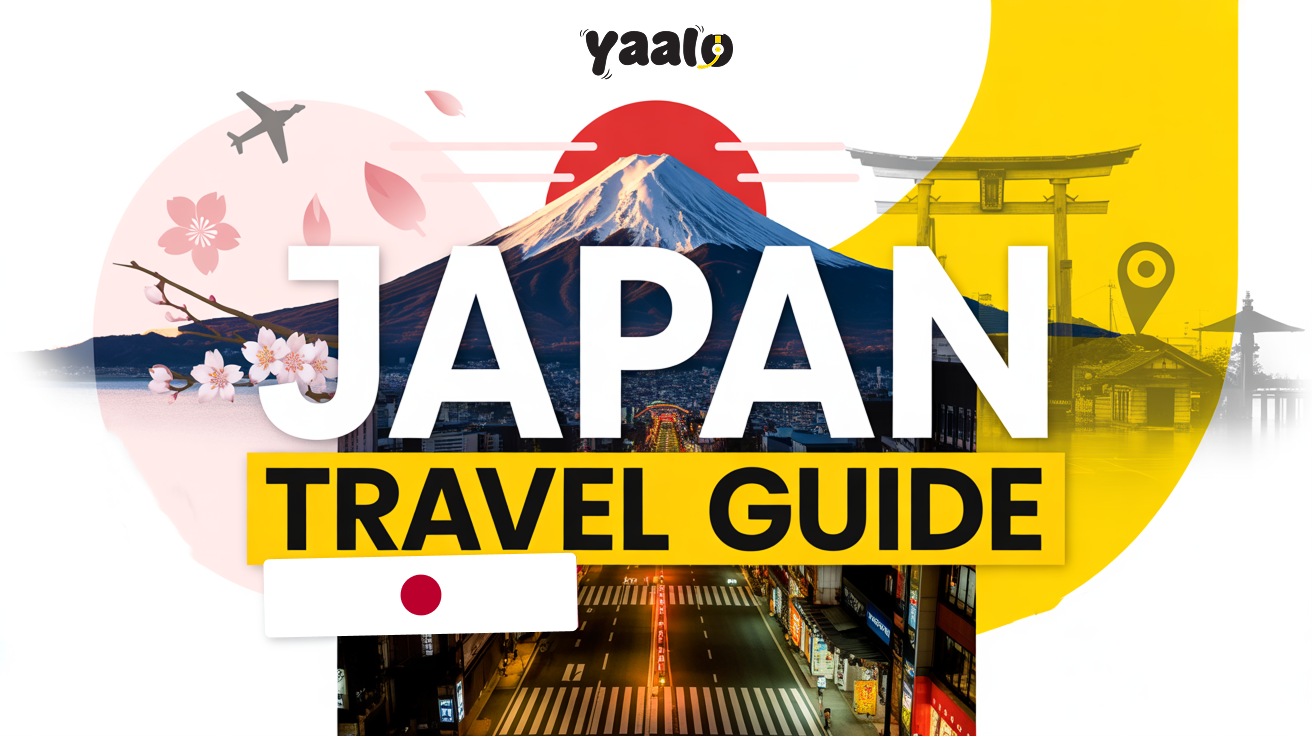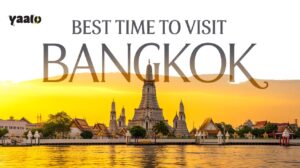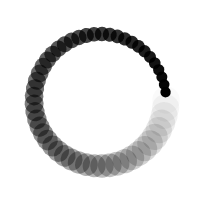Most people land in Tokyo, rush through Kyoto, and then fly home thinking they’ve “done Japan.” But anyone who’s travelled deeper knows the secret that Osaka is the city that surprises them the most.
It’s loud in the best way. Streets glow with neon, food stalls crank out takoyaki and okonomiyaki, and the energy feels raw, real, unpolished compared to Tokyo’s sleek edges.
Yet a short ride on the Shinkansen bullet train from Shin-Osaka Station puts you in Kyoto, Nara, or even on a day trip toward Mount Fuji.
Osaka Castle grounds whisper history, while Dotonbori screams with giant billboards and riverside bars. You can crash in the comfort of the InterContinental Osaka, or eat shoulder-to-shoulder with locals in the Kuromon Ichiba Market.
And because the city is so well connected, with Osaka Station, Namba Station, and Japan Rail Pass routes, it doubles as the perfect Kansai base.
Things don’t just end here! With a Yaalo eSIM, there is no headache of buying SIMs at the airport or hunting for Wi-Fi. With instant digital setup, you can look up train times, drop pins in Google Maps, or check reviews before ordering a mystery skewer at a street stall.
Let’s see Japan through a real traveller’s eyes to collect information that will double everyone’s fun!

Best Time to Visit Osaka in 2025!
Osaka doesn’t do boring seasons. Everyone feels like a new personality. The best time depends on your style of travel:
Spring (March – May): Osaka wears pink. Sakura trees burst into bloom, especially near Osaka Castle Park. Locals picnic under the blossoms, and yes, it’s crowded, but it’s also unforgettable.
Summer (June – August): It’s hot, sticky, and alive. Expect night markets, festivals, and fireworks lighting up the riverside. Perfect if you want Osaka at full volume.
Autumn (September – November): Cooler days, red maple leaves, and thinner crowds. This is the sweet spot for travelers who want balance and beauty without chaos.
Winter (December – February): Crisp air, steaming bowls of ramen, and easy day trips by train to see Kyoto in the snow. Bonus: flights and hotels are often cheaper.
The real trick? Plan around your interests, not just the weather. Love food? Winter and summer nights serve the best street eats. Love photos? Spring and autumn deliver colors no filter can improve.
And remember: with a reliable Yaalo Japan eSIM plan, you can keep an eye on festival schedules. Also, last-minute ticket releases, or even the forecast that decides whether you’ll see cherry blossoms in full bloom or miss them by a week.
Top Things to Do in Osaka (2025 Edition)!
If Tokyo is polished and Kyoto is poetic, Osaka is playful. The city doesn’t ask you to admire it. It dares you to join in. The following list will help you with the best things to do in Japan:
Dotonbori Canal: Neon signs, street performers, and the famous Glico running man. It’s touristy, yes! But also pure Osaka. Grab takoyaki from a sizzling street cart, then take the canal cruise for a new angle.
Osaka Castle: More than just a photo stop. The museum inside traces samurai stories, while spring brings a sea of cherry blossoms around its moat.
Umeda Sky Building: Ride the glass elevator up to the Floating Garden Observatory. Sunset hits different here, with skyscrapers fading into mountains.
Kuromon Ichiba Market: A riot of seafood stalls, wagyu skewers, and sweets you won’t find in guidebooks. Pro tip: go early to catch the best cuts.
Universal Studios Japan: Osaka’s blockbuster playground. The Super Nintendo World expansion draws gamers and families alike. Book tickets online in advance; they sell out fast.
Osaka’s charm isn’t just in landmarks. It’s in the way a street vendor chats while flipping okonomiyaki, or how a late-night izakaya table feels like home even if you don’t speak a word of Japanese.
Day Trips from Osaka You Can’t Miss!
One of Osaka’s biggest strengths? Its location. With a Japan Rail Pass or quick rides on the Shinkansen, you can turn a weekend into a highlight reel:
Kyoto (15 min): Temples, tea houses, bamboo groves. Kyoto is elegance on rails. Go early to beat the tour buses at Fushimi Inari Shrine.
Nara (30 min): Deer that bow for biscuits, plus Todai-ji Temple with its giant Buddha. Small town, huge memories.
Kobe (30 min): More than just beef. The harbor views and Mount Rokko ropeway make it a stylish day escape.
Himeji (1 hr): Japan’s most spectacular castle. Unlike many rebuilt fortresses, Himeji Castle is the real deal, pristine since the 1600s.
Hiroshima (90 min on Shinkansen): Sobering and essential. The Peace Memorial Park and Museum will stay with you long after the trip.
The bonus? Returning to Osaka each night means you don’t live out of a suitcase. The city’s rail hubs, Shin-Osaka, Namba, and Osaka Station, make it effortless to pivot, whether you’re chasing cherry blossoms or winter illuminations.
And here’s where a little travel tech comes in: with a Yaalo eSIM, you don’t lose time fumbling with vending machines or paper maps. Just pop open your phone, check the JR train app, and keep moving. That’s how you make Kansai feel smaller, and your trip feel bigger.
Where to Stay in Osaka (2025)?
Osaka has a bed for every kind of traveler. Whether you want neon energy outside your window or a quiet base just one stop from the action.
Namba: The heart of Osaka nightlife. Stay here if you want Dotonbori’s food stalls, karaoke bars, and neon lights at your doorstep. Boutique hotels and hostels cluster around Namba Station, perfect for travelers who like walking home instead of catching the last train.
Umeda (Kita): Business district by day, polished dining by night. Umeda is where you’ll find skyscraper hotels with big-city views, plus direct access to JR lines and the airport.
Shin-Osaka: If bullet trains are your thing, this is your launchpad. Ideal for travelers who plan multiple-day trips, since you can hop on the Shinkansen without dragging luggage across town.
Shinsaibashi: Fashion-forward, buzzing with cafes and boutiques. Great for younger travelers or anyone who wants shopping streets to double as sightseeing.
Budget Stays: Capsule hotels in Namba and Tennoji start cheap but are surprisingly stylish in 2025. Hostels often throw in extras like free walking tours or izakaya nights, an easy way to meet fellow travelers.
Tip: Book early during cherry blossom season (late March to early April) and autumn leaves (November). Osaka hotels fill up weeks in advance, and last-minute prices jump fast.
Getting Around Osaka Like a Local!
The beauty of Osaka? You don’t need a car. The city is stitched together with trains, subways, and walking streets. Here’s how to move smart:
IC Cards (ICOCA, Suica, PASMO): Tap-and-go cards that work on almost all trains, subways, and buses. Buy one at the station, top up, and you’re done.
JR Pass & Regional Rail: If you’re bouncing to Kyoto, Nara, or Hiroshima, the JR Pass saves money. Within Osaka, JR local lines plus private railways (like Kintetsu and Hankyu) fill in the gaps.
Osaka Metro: Easy to navigate with color-coded lines. Stations like Namba, Umeda, and Tennoji are major transfer hubs.
Walking: Central Osaka is compact. A 20-minute walk often beats waiting for the next train.
Bicycles: Locals love cycling, and short-term rentals are everywhere. Just remember to park in designated spots; fines for rogue parking are strict.
Taxis: Not cheap, but useful late at night. Most drivers still rely on GPS, so have your destination ready in Japanese or pinned on Google Maps.
One pro move? Always keep your phone connected. Translation apps, live subway maps, and ticket booking sites save time and stress. That’s where Yaalo eSIM slips in!
With as low as 1 GB for 3 days at $1.83, your phone just works from the moment you land. For a city that never slows down, that connectivity keeps you a step ahead.
Food Experiences You Can’t Miss in Osaka
Osaka isn’t nicknamed “Japan’s Kitchen” for nothing. The city lives and breathes food, and travelers often say eating here feels like the main attraction. Forget fine dining, street eats, and casual spots are where Osaka shows its real flavor.
Takoyaki: Crispy outside, gooey inside, stuffed with octopus and topped with bonito flakes that “dance” in the heat. Grab a paper tray in Dotonbori and eat it while it’s still steaming.
Okonomiyaki: Osaka’s famous savory pancake! A mix of cabbage, batter, pork, seafood, or whatever you fancy, grilled right at your table. Locals argue endlessly about who makes the best, but you can’t go wrong around Umeda.
Kushikatsu: Skewered and deep-fried veggies, meats, and seafood. Shinsekai district is the birthplace, where old-school shops still serve them with rules like “no double-dipping” in the sauce.
Street Food Alleys: Hozenji Yokocho is an atmospheric, narrow lane near Namba, lined with lantern-lit izakayas. It’s touristy, but the vibe and sizzling plates are worth it.
Markets: Kuromon Ichiba Market is a must for seafood lovers. Fresh uni, grilled scallops, or tuna skewers make the perfect morning snack.
Tip: Osaka’s food culture is casual, so don’t overthink it. Wander, follow the smell, and join the longest queue you see. Chances are locals know best.
Festivals and Seasonal Highlights!
Timing your trip right can change your entire Osaka experience. The city pulses with events that reflect both tradition and pure fun.
Cherry Blossom Season (late March – early April): Osaka Castle Park becomes a sea of pink. Families spread picnic mats, and evenings glow with lantern-lit blossoms.
Summer Festivals: Tenjin Matsuri (July) is one of Japan’s three biggest festivals, featuring a massive river parade with fireworks. Locals dress in yukata, and food stalls line every street.
Autumn Colors (November): Minoo Park, just outside the city, is famous for fiery red maple leaves, a calm escape from Osaka’s buzz.
Winter Illuminations: From November through January, Umeda and Midosuji Boulevard sparkle with thousands of LED lights. It’s Osaka showing off its playful side.
Spring Sumiyoshi Taisha Festival: A cultural gem in late July, where processions, music, and traditional rituals transport you back in time.
Pro tip: Japanese festivals are crowded, and mobile data can crawl. Having Yaalo eSIM means you won’t lose connection when everyone is trying to upload fireworks videos at once. Seamless internet keeps your maps, translation, and photo-sharing smooth, no matter how packed the crowd gets.
Shopping and Souvenirs in Osaka!
Osaka is Japan’s most dynamic shopping hub. From quirky fashion to kitchen knives, you’ll find treasures that are both useful and unique.
Shinsaibashi-suji: A covered arcade stretching nearly 600 meters. Expect global brands mixed with Japanese boutiques.
Amerikamura (American Village): Osaka’s youth culture hotspot, full of vintage clothing shops, sneaker stores, and street art. Think of it as Osaka’s answer to Tokyo’s Harajuku.
Nipponbashi Den Den Town: If electronics, anime, or retro games are your thing, this is paradise. Perfect for rare finds you can’t get outside Japan.
Kuromon Market Souvenirs: Besides food, this market sells packaged goodies like Japanese sweets and regional sake. Traveler-friendly gifts that fit in a suitcase.
Sakai Knives: A short train ride brings you to Sakai, famous for hand-forged kitchen knives. They’re not cheap, but they’re heirloom quality.
Pro tip: Bring cash for smaller shops and markets. Japan is getting better with cards and digital payments, but mom-and-pop stores may still be cash-only. Having reliable internet with Yaalo eSIM also makes currency conversions, tax-free shopping forms, and digital receipts painless.
Conclusion
You’ve read the map, caught the vibes, and seen Osaka through a traveler’s lens. Now let’s seal it with a casual, straight-from-the-heart wrap.
Osaka isn’t Tokyo. It’s noisier, tastier, more alive. Streets sizzle with street foods you’ll chase back to your hotel, rail lines connect you faster than you can say “bullet train”, and city neighborhoods fold into each other like chapters in a chapter book.
I’ve shown you the hotspots and hidden joy: the views from Umeda, hotels from minimalist to splurge (hello, Intercontinental Hotel Osaka), nostalgic shops in Amerikamura, and the easy day trips to Kyoto or rabbit-faced deer in Nara. And, yes, the cherry blossoms in spring are something you owe yourself to witness.
Here’s one thing that ties it all together: Yaalo eSIM for Japan keeps you surfing, navigating, and translating without hunting for Wi-Fi or juggling SIM cards. Plug in the QR code before you land, and Osaka becomes that much friendlier to explore on your terms.
Plan smart. Eat boldly. Wander when curiosity strikes. And let Yaalo carry the data, so you can just be in the moment.
FAQs
How many days should I spend in Osaka?
Most travelers say 3 – 5 days lets you dive into the city and hit one or two day trips nearby.
Is Osaka the food capital of Japan?
Many locals claim Osaka is “Japan’s kitchen,” thanks to its obsession with delicious, affordable eats like takoyaki and okonomiyaki.
When is the best time to visit Osaka?
Spring (March – May) and fall (September – November) offer the best weather and beautiful scenery, sakura or autumn leaves, just choose your color.
Can you visit Osaka in just two days?
You can, but it means skipping neighborhood gems and day trips. Three days is plenty to see major sights; four to five days gives you breathing room.
- Best Time to Visit Argentina – A Yaalo eSIM Travel Guide! - October 10, 2025
- Best Time to Visit Vietnam: A Traveler’s Guide! - October 8, 2025
- Guide for Travelling From London to Paris by Eurostar! - October 8, 2025








